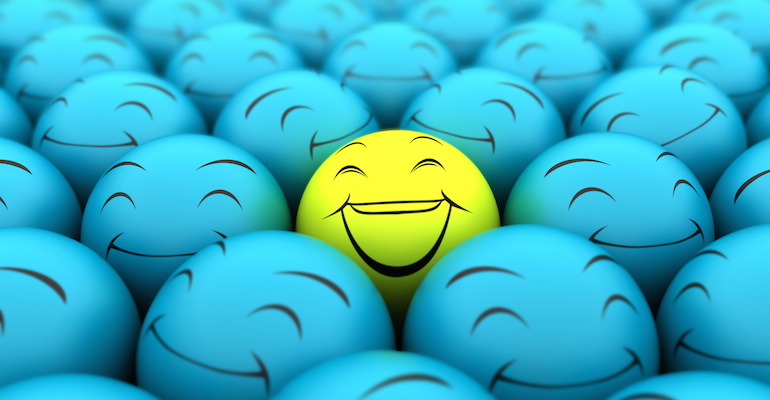 Reading Time: 3 minutes
Reading Time: 3 minutesFrom the time we were very young, most of us were told: Put your head down and work hard! Nose to the grindstone! If you work hard, success will follow.
Right? It’s part of our cultural mindset. Work harder, get what we want. Work harder, get more of what we want.
Then we try to apply that concept to happiness.
If I can just accomplish this next goal, we think, I will be happy.
If I get skinnier …
If I get that job …
If I make more money …
If I find a spouse …
If I have kids …
If my kids are successful …
…then I will finally be happy.
All around us, people are working harder, working smarter, working more hours so they can “earn” that elusive state of happiness.
But when I look at my own life, “working harder” hasn’t been my road to happiness. Yes, working hard is important, but it isn’t the determining factor. I bet it isn’t for you, either.
And when I watched this TED Talk, it clicked. Success doesn’t lead to happiness. Happiness leads to success.
Our brains work in the opposite order of what most of us think, according to the speaker, a guy named Shawn Achor, who studied happiness at Harvard University for 12 years.
“If you raise somebody’s level of positivity in the present, then their brain experiences what we call a ‘happiness advantage.’ The brain at positive works better than at negative, neutral, or stress,” he says.
In fact, Achor’s research found that every single business outcome improves when a person’s brain is “at positive.” A person is 31 percent more productive, 37 percent better at sales, and doctors are 19 percent faster and more accurate when their brains are positive rather than when they are negative, neutral, or stressed.
So why is this?
Dopamine. We all know that dopamine makes you happier, but through his research, Achor learned that dopamine also “turns on all the learning centers in your brain.”

It’s not enough, though, to just decide to be happy. Sure, mindset is an important part of it, but what I liked most about Achor’s talk is that he found a set of actions that rewire the brain so that it is more apt to be positive.
“We’ve found that there are ways you can train your brain to become more positive. In just a two-minute span of time done for 21 days in a row, we can actually rewire your brain, allowing your brain to work more optimistically and more successfully,” he says.
This is Achor’s action list for “creating lasting positive change”:
- Identify Three Gratitudes: Every day, identify three new things for which you are grateful. By doing this for 21 days straight, your brain “will retain a pattern of scanning the world not for the negative but for the positive first.”
- Journal: “Journaling about one positive experience you’ve had in the past 24 hours allows your brain to relive it.”
- Exercise: “Exercise teaches your brain that your behavior matters.”
- Meditate: Achor said that meditation allows people to hurdle over that “cultural ADHD” that encourages us to scatter our brain’s focus. By meditating, we can focus instead on the task at hand.
- Be Kind: Lastly, he suggests practicing random or conscious acts of kindness. Open up your email and send someone a note of thanks. Take (a WLC-compliant) dinner over to a friend’s house—just because.
Achor’s talk is right up my alley because he’s short-circuited the whole process of happiness. He’s identified actions that create space for the brain to be happy.
This is what Michael and I inadvertently did with the Whole Life Challenge. It struck me that the “rules for creating lasting positive change” are a lot like the 7 Daily Habits and the Well-Being Practices in the Whole Life Challenge. Right? We came into it through our intuition and experiences, but Achor has 12 years of data to back it up.
And it’s not enough to just “decide” to be happy. You can’t just think, I want to be happy. It must be accompanied by action. It’s hard work, just like the Whole Life Challenge is hard work.
None of it works—fitness, health, happiness—if you aren’t in action.
So let’s be in action this week. Leave a comment and let me know: what can you do to create the space for success this week?






